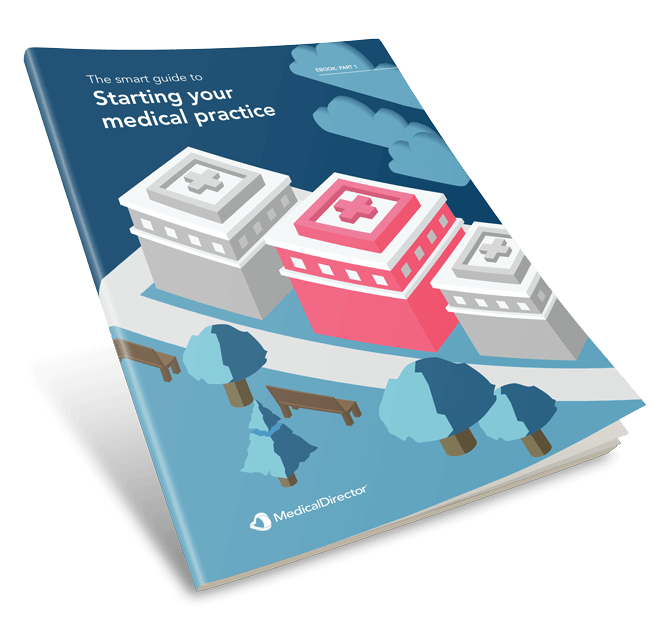Buying an established practice vs. starting your own
For potential medical practice owners, one of the biggest decisions to make is whether to buy an established business, or start your own practice. If you’ve got an entrepreneurial itch and proven business skills, then planning, launching and growing a new business can be very appealing. You have more freedom and autonomy over every aspect of your new practice, from location and design, right through to staffing, workflows and practice culture. Starting from scratch with practice ownership means you can build a practice that aligns with your vision, and one that can potentially meet more of your financial and lifestyle goals.
However, starting a new practice can be both daunting and stressful. Designing a compliant practice, obtaining permits, purchasing equipment and supplies, hiring staff, ongoing practice management, marketing your practice and growing a sustainable patient base, are steps that can be time-consuming and expensive.
That’s why many GPs choose to buy an existing medical practice that’s already in operation. It’s generally the lower risk option because an older practice will already have patients, so cashflow is likely to continue during the handover period. An existing practice also provides the potential owner with the opportunity to experience it first-hand, offering greater certainty and a clearer picture of future profitability.
Advantages of buying an established medical practice
Some of the other advantages of buying an established medical practice include:
- Immediate cash flow: When you’re buying a medical practice with an established patient base, there will be cash flow from Day 1.
- Experienced staff: There’s less urgency to hire new staff as you already have employees who are familiar with the processes and patients. Your staff won’t need to undertake training to get up to speed so you’ll save time and costs.
- Less set-up time: You don’t need to factor in lead time to plan, build and set up the practice. Existing equipment, supplies, furniture and IT infrastructure will already be in place.
- Established reputation: The local community will already be aware of the practice and the services it provides.
- Reduced marketing requirements: You won’t need to invest in an extensive launch campaign, which will save on marketing and advertising costs.
Disadvantages of buying an established medical practice
Of course, there are also disadvantages when buying an existing practice. These include:
- Out-of-date assets: An older medical practice may have old equipment, décor or outdated computer systems and IT infrastructure.
- Employee issues: Some staff members may not welcome the changes you wish to implement, or you may not agree with some of their work habits. You’ll need to create a clear change management process if you’re planning on creating a different corporate structure.
- Rebranding costs: You may want to rebrand the practice, or redesign the physical premises, resulting in added cost.
- Reputational issues: The practice may have received negative reviews or faced some reputational damage in the past which may not be easy to rectify.
- Patient churn: Existing patients aren’t guaranteed to stay with the practice, but may follow the previous medical professionals to their next practice (if they’re not retiring).
Important considerations when buying a medical practice
When deciding whether or not buying an established practice is the right decision for you, there are some important factors to consider:
- Location and purchase price: A gp practice that’s located in a busy urban area may have a higher purchase price, but bring in more patients over the long-term than a practice located in a regional area. Seek a professional review of the practice’s financial statements to assess its value and future income earning capacity.
- Premise ownership: Does the existing owner of the practice currently own or lease its premises? What are the terms of the lease, and are you likely to be able to continue the lease for at least a number of years? If there’s a mortgage attached to the practice, how much are the payments and when are they due?
- Tangible assets: Which assets, such as equipment and furniture, are included in the sale? How much of it needs updating? How current are the computers and clinical and billing software being used? Does the practice have data security measures in place? When buying or selling businesses it’s important to look at everything that’s listed as an asset to get a clear picture of its actual value.
- Intangible assets: Consider the value of the ‘intangible’ assets too. These include patient lists and records, reputation, relationships with patients and specialists, and the expectation of return visits from patients. It’s always a good idea to seek a professional valuation if you’re considering buying a business.
- Employee liabilities: As you’ll be taking over the existing staff contracts, you’ll need a clear picture of current employees’ annual leave, sick leave, long service leave and tax liabilities, as this may have a bearing on the sale price.
- Future considerations: Are there any developments or council regulations planned for the area that may affect the viability of the practice? Are there opportunities to improve and grow the business?
It goes without saying that seeking professional legal and financial advice is essential to ensuring a smooth transition into running your own practice – whether that’s buying an established business, or starting a new one. There is no right or wrong answer when it comes to making such a big decision – it comes down to your individual circumstances, your appetite and passion for business development, and your vision for the next stage of your professional career.










